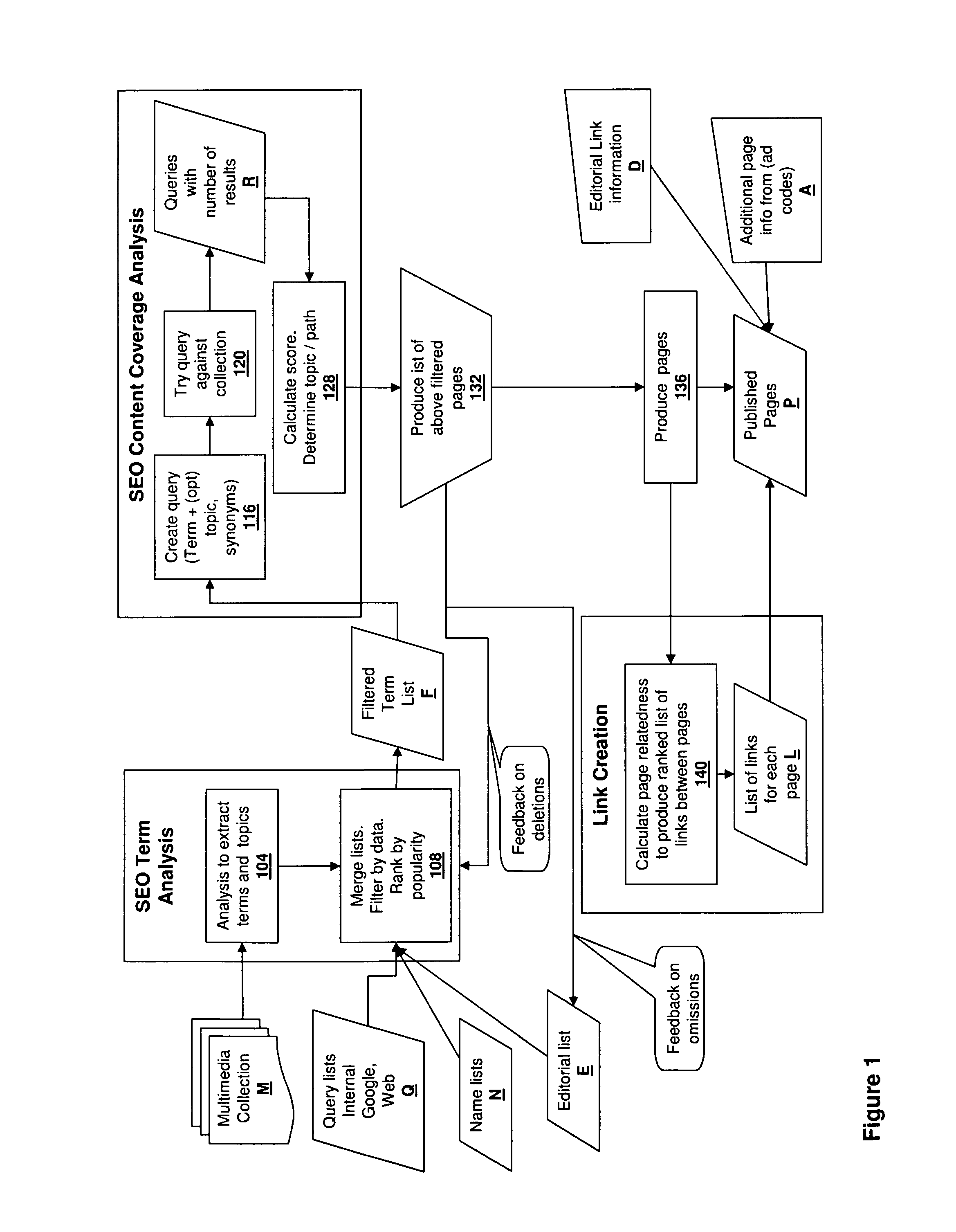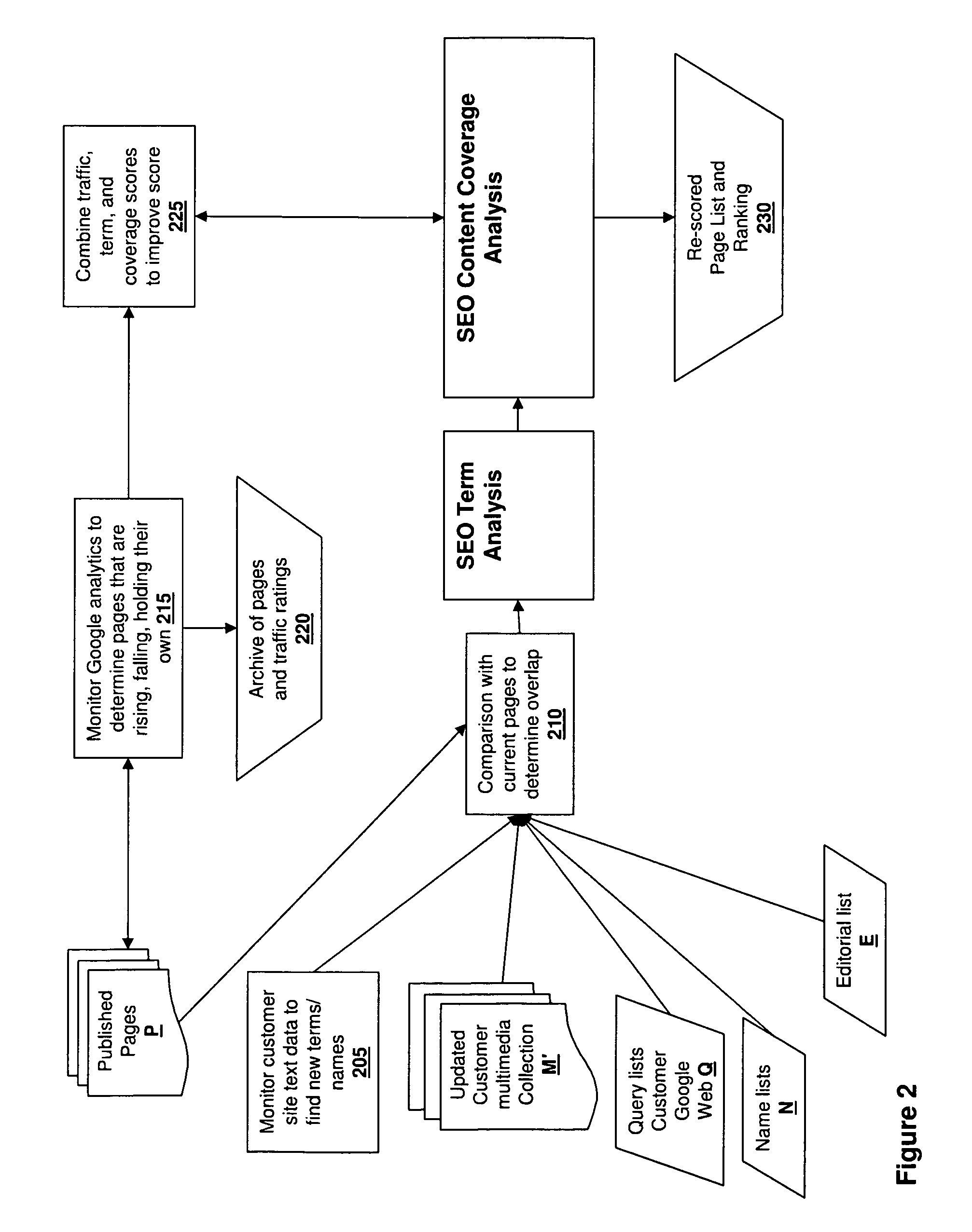Search engine optimization
a search engine and search engine technology, applied in the field of search engine optimization, can solve the problems of not being able to attribute a high rank to web pages with significant multimedia content, search engines may not “understand” what a web page is about, and both approaches have drawbacks
- Summary
- Abstract
- Description
- Claims
- Application Information
AI Technical Summary
Benefits of technology
Problems solved by technology
Method used
Image
Examples
Embodiment Construction
[0026]FIG. 1 illustrates a process for dynamically producing and publishing web pages that are constructed from a collection of links to multimedia content M from one or more sources such as content publishers, search engine repositories, and others. At a high level, the process includes three phases—a term analysis phase in which key terms are identified, a content coverage phase in which content is searched for the key terms (and variants thereof), and a link creation phase in which relevant links are identified and published as web pages.
[0027]Generally, content owners want their content to be easily found and viewed as frequently and by as many people as possible, thereby making the content more valuable, as more views translates into greater advertising revenue. For text-only or text-heavy content (articles, blogs, etc.) increasing viewership is relatively straightforward, as search engine spiders identify occurrences of key words and phrases and build indices on which the sear...
PUM
 Login to View More
Login to View More Abstract
Description
Claims
Application Information
 Login to View More
Login to View More - R&D
- Intellectual Property
- Life Sciences
- Materials
- Tech Scout
- Unparalleled Data Quality
- Higher Quality Content
- 60% Fewer Hallucinations
Browse by: Latest US Patents, China's latest patents, Technical Efficacy Thesaurus, Application Domain, Technology Topic, Popular Technical Reports.
© 2025 PatSnap. All rights reserved.Legal|Privacy policy|Modern Slavery Act Transparency Statement|Sitemap|About US| Contact US: help@patsnap.com



